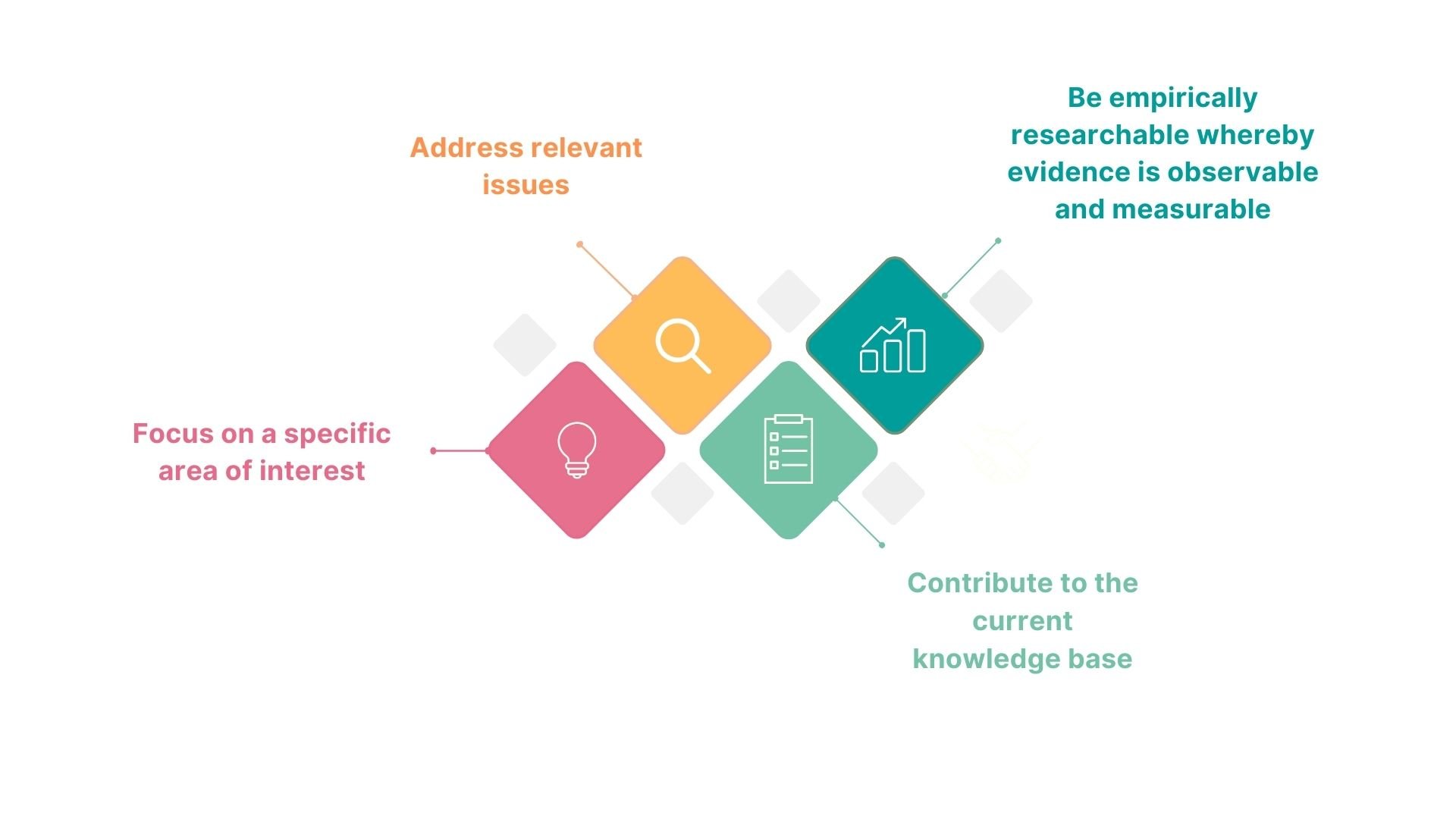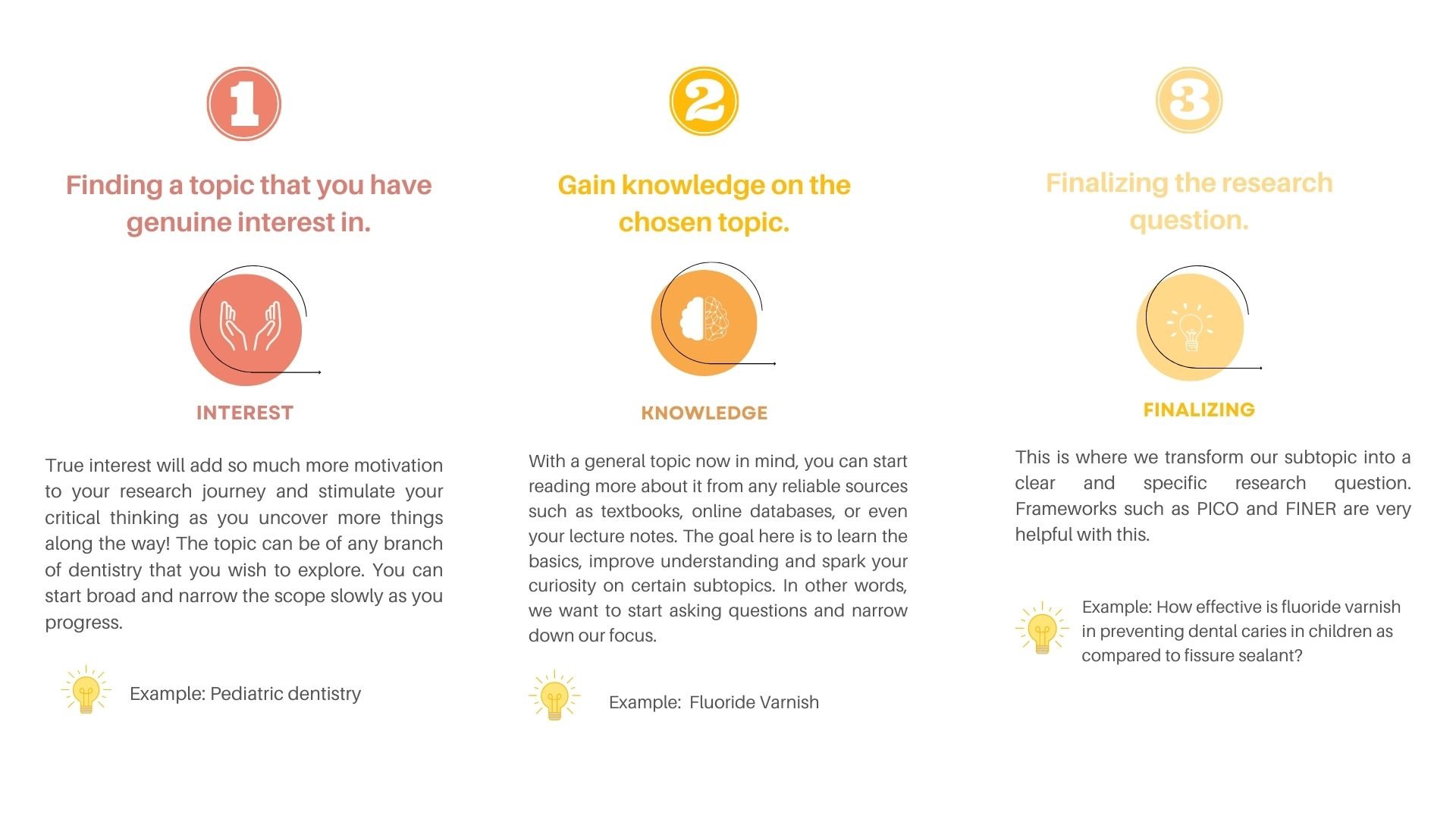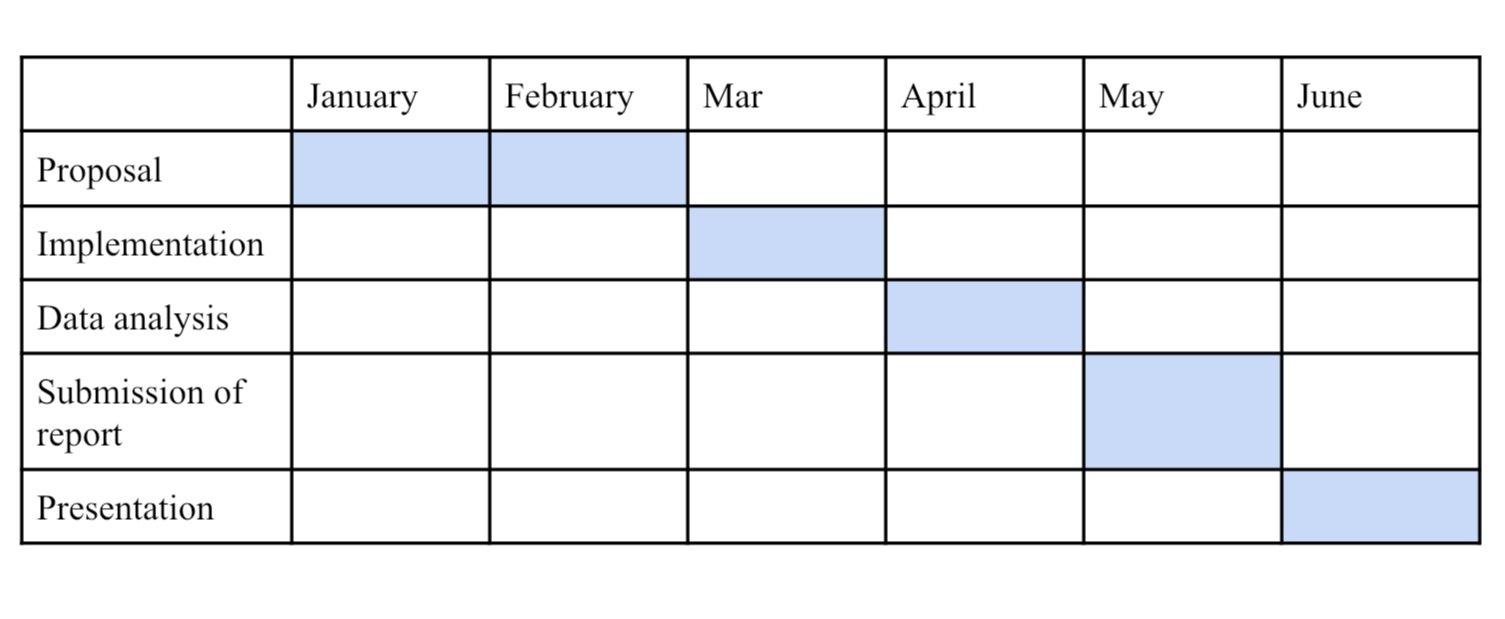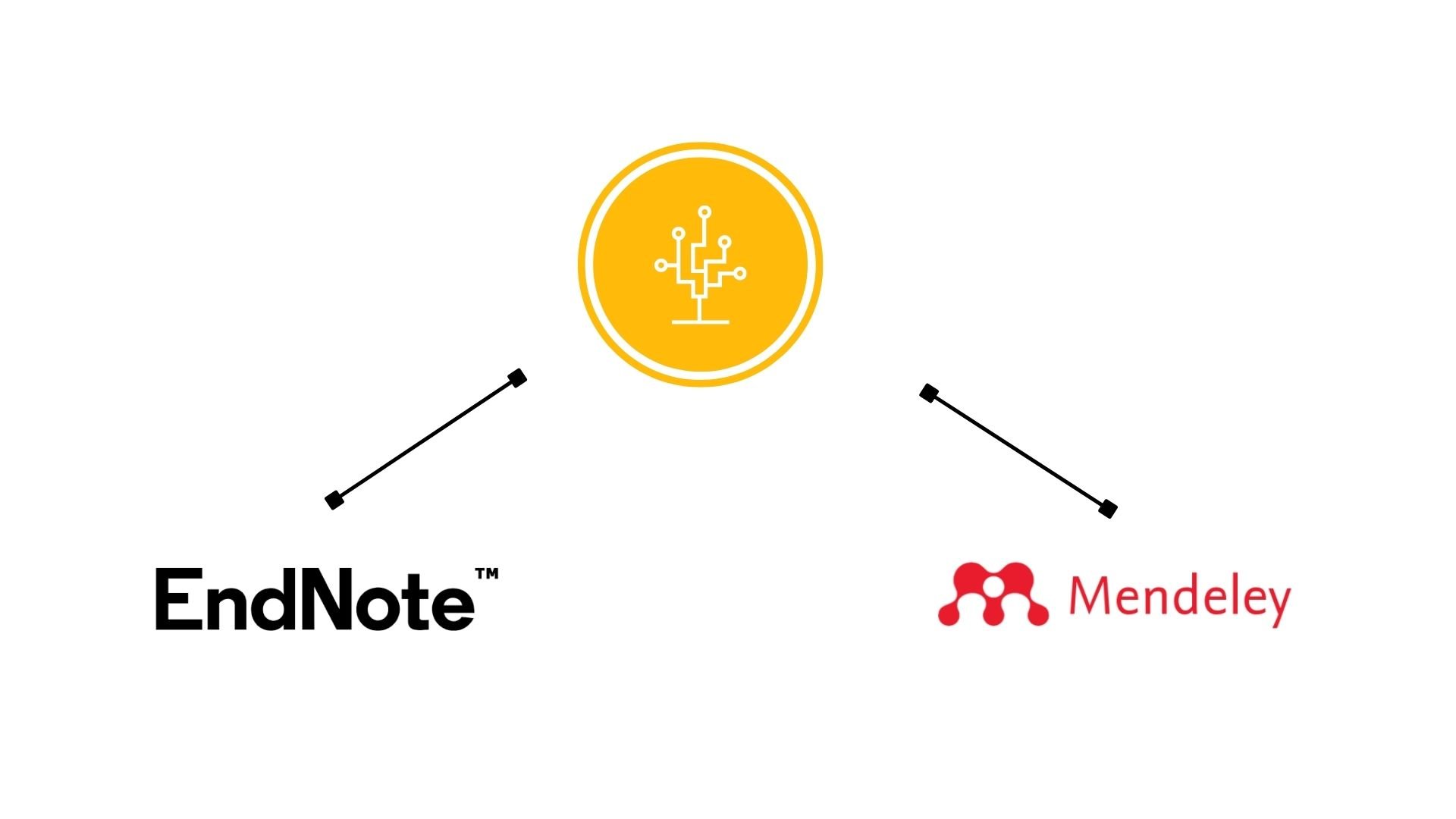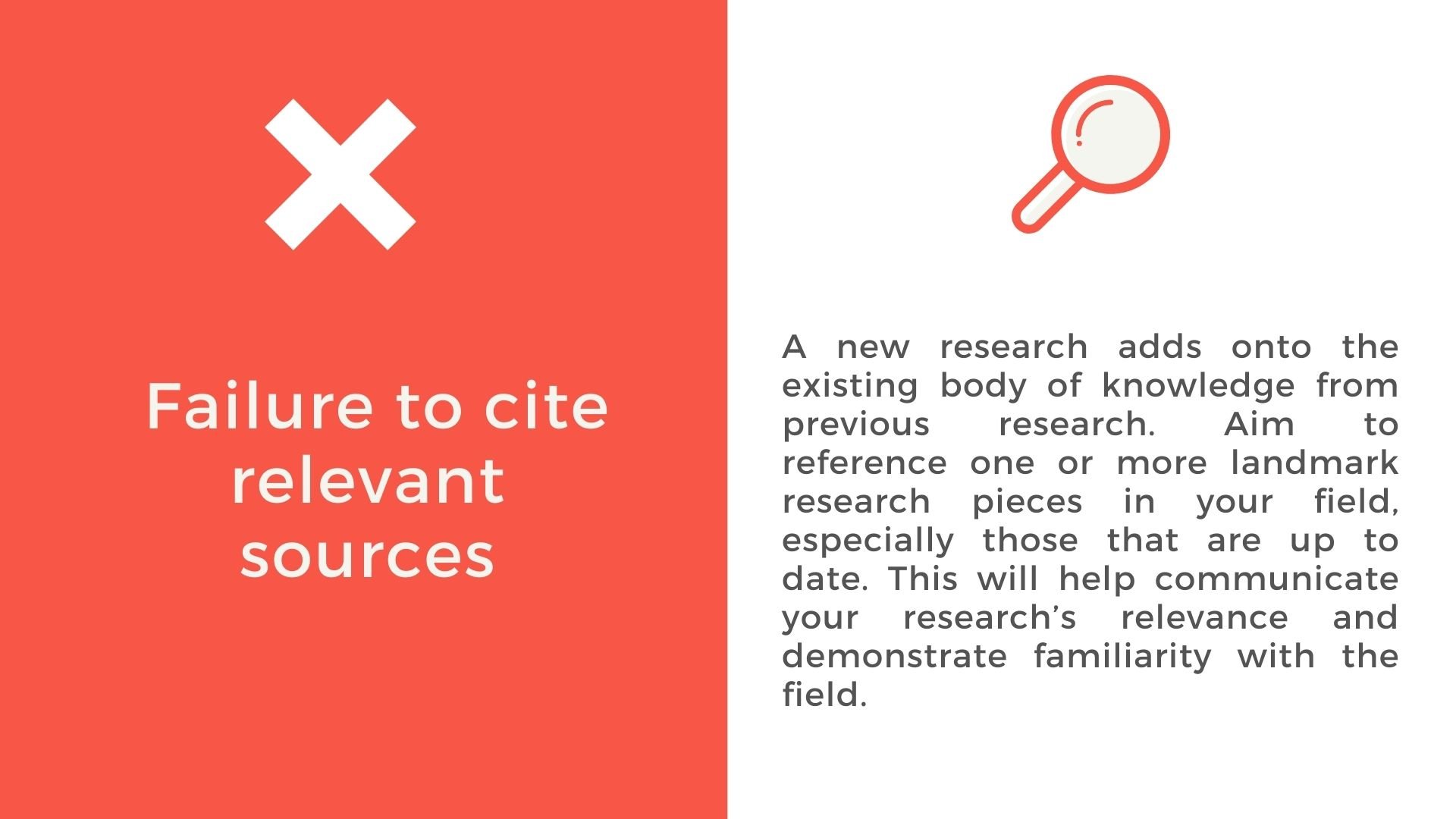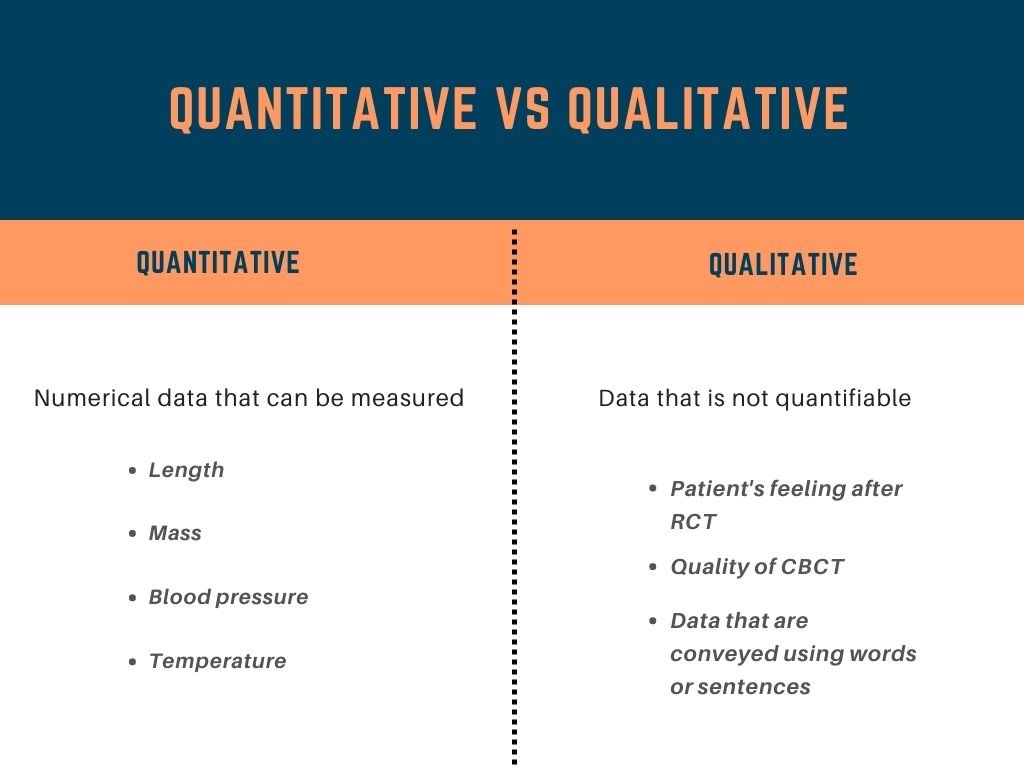Research process: A deeper dive
Step 1: Formulation of research question
Every research begins with a research question. A research question is an inquiry that the research aims to answer.6 Although it sounds simple, a research question is super important as it acts as the foundation on which the whole research will be built! Think of it as the DNA of research that defines the scope, purpose, and direction of the research. A good research question should:
Now let us go through a step-by-step process to formulate our research question!6, 7
Check out the links below to learn more about PICO and FINER:
Step 2: Literature review
After clearly constructing the research question, we can start reading previously published research papers which are related to our topic. This process is known as literature review, and it involves the researcher interpreting and synthesizing previous literature to broaden their vision of the chosen research field.8
A literature review allows us to discover current issues related to the topic and learn from the experience of previous studies. In other words, we will know what worked and what didn’t from previous studies so that we can improve the methodology. It also helps us in identifying research gaps, preventing the duplication of research, and refining our research question further if required.8 This way, we are building our research upon the foundation laid by previous studies. Not only does this ensure a more robust research, but it also helps extend the chain of discoveries.
So, where do we find research papers for our literature review?
Nowadays, you can access a myriad of papers via online databases such as:
(We will discuss more on how to use online databases in the Tab 3, so read on!)
Let’s say you have found yourself some research papers, but how do we read them effectively?
Reading a research paper seems like a daunting and boring task, especially for first-timers, but with the following tips, everyone can start reading a research paper!9
Instead of reading word by word, try skimming through the paper to get a bigger picture before diving into the details. Focus on the abstract, methodology and results.
2. When reading through, focus on identifying the main points.
3. Try interpreting and summarizing the points. Ask yourself these questions:
Do you know what has been achieved in this research?
Did the researchers attain the answer to their research question?
Will it be helpful for your research?
For more details on how to read a research paper, click here.
Step 3: Formulation of research hypothesis
The next step is to formulate a research hypothesis, which is a predictive statement of the research question’s possible outcome.10 Basically, ask yourself what are the assumptions and expectations of this research? An effective research hypothesis should reflect the relationship between variables and meet 2 important criteria, which are testability and falsifiability. In other words, a research hypothesis can be tested and can be either proved or disproved through the research.10 After accomplishing the research, the hypothesis will be evaluated, and a conclusion can be drawn.
There are 2 main types of hypotheses which are the null hypothesis (H0) and the alternative hypothesis (H1). The null hypothesis states that there is no exact or actual relationship between variables whereas the alternative hypothesis states that there is an effect or relationship between them.10 When writing the hypothesis, it is also useful if we follow the PICO format (especially for systematic reviews) and try to show the trend when we compare different variables for the alternate hypothesis.
Hypotheses are like the building blocks of new scientific theory. As existing hypotheses get disproved and replaced by hypotheses of greater strength, we move one step closer to understanding the topic more. To learn more about hypotheses, visit Hypotheses.
Example:
H1 - Fluoride varnish is more effective in preventing dental caries in children as compared to fissure sealant.
H0 - There is no significant difference between fluoride varnish and fissure sealant in preventing dental caries in children.
Step 4: Research design
Now that the hypothesis is generated, it’s time to design a research and put it through the test! Follow these steps to design your research:
1.Decide which study design and study setting best fits the research question.
The study setting is the place where the study will be conducted such as a dental clinic or a laboratory. To learn more about different study designs, click Types of research studies
2. Define the target population.
Every research has its own target population, which is the population of interest the research aims to study.11 They might share common characteristics like age, sex, or health condition. It is important to clearly define the demographics of the target population and prevent a population that is too general as it is hard to get a sample size large enough to represent the population.11
Example: “Children aged 4 to 6 in Malaysia” is a more specific target population as compared to “children” alone
3. Determine the sample size and sampling techniques.
In most research, it is almost impossible to get the entire target population to take part in the research, which is why we need a study population (aka sample population). A study population is a group of participants selected from the target population to take part in the study.12 A sample population is smaller than the entire target population but should be large enough so that it can represent the target population.12 The process of determining how many participants to include is known as sample size determination and requires calculation using mathematical formulas. Some components that are used in sample size calculation include α, Power, confidence level and the effect estimate.
Sometimes, you will need to seek consultation from a statistician and utilize certain statistical software such as G*Power software or PS software as well.
Next, we need to select the participants using appropriate sampling techniques. There are 2 types of sampling methods which are probability sampling and non-probability sampling. To learn more about them, click
4. Decide the data collection and data analysis method.
Note: Further details will be discussed n the following sections, but do note that data collection and analysis methods should be determined at this stage!
Step 5 :Research proposal
Good job for sticking around! By following the previous steps, you have now made a master plan for your research. But how will you present your ideas to your institution so that you get the final nod to proceed? The answer is through a research proposal!
A research proposal is a formal written document that gives the reader a bird’s eye view of your research.13, 14 Typically, students will be requested to complete their proposal and present it to the research ethics committee of your institution. Your proposal should be able to answer the following questions for your readers: 13, 14
What is your research about and what does the scientific world know so far about your research topic?
What makes your research important and different from previous research?
What does your research aim to achieve?
How will the research be conducted?
What are the milestones of your research?
How will the budget be allocated?
Note: The format for the proposal might vary across different institutions, so remember to always see clarification from your supervisor in charge or module coordinator to get an idea of what your institution wants the proposal to be like.
With that in mind, proposals will generally contain the following essentials:13, 14
1. Title
This is where you include your research title, keywords, name of supervisors (aka principal investigators), student researchers, institutions, and respective departments.
Retrieved from: https://www.karger.com/Article/Pdf/444268
2. Introduction (including literature review summary)
This is normally written in paragraphs and includes the following:
Background - Introduce your research topic and relate your research to the relevant current issues
Problem statement - State your research problem and the issue/research gap that you would like to solve through your research
Justification - Why should you conduct this study? What makes it important? What outputs are expected from your research?
Literature review summary – What do you know so far after going through related published articles?
3. Research question (s) and hypothesis
4. Aims and objectives
5. Expected outcome/significance of the study
This is where you can briefly outline the outputs that your study aims to produce.
6. Project team
This is where you introduce the team members in your research project. You will need to identify the team leader (aka principal investigator), researcher(s), and any other individuals that are involved in conducting the research such as support staff and contract staff. Their respective roles, authorship and co-authorship needs to be clearly defined as well.
7. Methodology
This is where you describe the entire process of how will the research be carried out, including important details (whichever applicable) such as:
Target population, sample size, and sampling methods
Inclusion and exclusion criteria
Materials and equipment involved (Do include the databases used if you are doing meta-analyses and systematic review-based studies)
Variables
Steps involved in the intervention
Parameters tested
Data collection and interpretation method
Statistical analyses methods
Timeline (in a Gantt Chart)
Note: The components listed here may vary depending on whether you are doing a lab-based study or a systemic review.
This is a very integral part of the research, and it can be complicated at times (especially so for experimental-based research), so remember to work together and seek help from supervisors whenever needed!
8. Timeline
A timeline can help researchers keep track of the progression of the study and help ensure that a study can be completed within a set period. A timeline is basically a list of tasks arranged in chronological order from the start and leading to the completion of the project.15 A Gantt chart can be used to depict the study timeline in a more comprehensive manner, where bars are used to reflect the period of time required for each task.15
Gantt chart
9. Milestones
Similar to the Gantt chart, research milestones help researchers track the study’s progression. Think of milestones as a check-in point along the project. Under this section, research activities are grouped into several phases with each phase intended to achieve a specific objective. A milestone is reached when a particular objective has been reached. In other words, milestones break off the research project into smaller phases to help researchers schedule and execute the plan.
10. Budget
This is where you show the reader how the budget will be allocated and is particularly important if your research is applying for funding. This may include:
Material and equipment (including chemicals and consumables)
External lab testing
Publication fees
Rentals
Travel and transportation
11. Reference list or bibliography
This is where you list down all the references that you used in writing the proposal. Also, don’t forget to do in-text citations to those that you include in your writing! EndNote and Mendeley are some useful applications that can help you manage your references.
Reference list - A list of reference that are cited in your work.16
Bibliography - Not only includes a list of references that are cited in your work, but also other background readings that you may have read, but not actually. Cited.16
Now that you know how to write your proposal, let’s learn what to avoid when writing your proposal.17
Step 6 :Data collection and analyses
After ethical clearance and approval of funding, your research can now officially begin! For every research, you will need to collect data. This is where you will be systematically measuring and recording data of the variables tested. The data collected can then be analyzed and interpreted to generate information.
To ensure a streamlined data management process, the roles of each individual researcher need to be clearly outlined and all researchers involved should be properly trained in their respective roles, starting from data collection, and calibration, to analysis techniques.
Data sources can be primary or secondary. Primary data is newly collected data that you will be gathering directly using your data collection tools whereas secondary data is data that has already existed, been published, or compiled.18 Furthermore, data can be either qualitative or quantitative in nature: 19
To collect data, you will need a data collection tool. For quantitative data, the common ones include questionnaires and surveys (consisting of close-ended questions) as well as specific equipment used for measurements like digital slide callipers, electronic balance, and many more. For qualitative data, this includes interviews (consisting of open-ended questions), ethnography, case studies, action research, observation, focus groups, and so on.
Quantitative data will usually need to be statistically analyzed.20 Generally, you will measure the central tendency (mean, mode, median), variability (standard deviation, range), normal distribution, correlation and regressions and finally draw a conclusion.20 Some analytical tests are used to determine the relationship between independent and dependent variables include Chi-square test, Student's T test, ANOVA and many more.
This will typically involve using statistical software like SPSS and certain mathematical formulas. Do not worry as supervisors will usually guide you in this part and help from statisticians might sometimes be needed.
Step 7 :Writing research paper
We have now reached yet another milestone of your research journey, which is writing the research paper! A research paper is a form of academic writing that provides analysis and interpretation of the research that you have done. In other words, it is a synthesis of your research and critical thinking. A research paper serves to communicate your findings to others and therefore, advance the body of knowledge in the field. There are different types of research articles including (and not limited to):
Original research articles
Reviews
Meta-analyses
Case reports
Click on tab 4 to learn more about the basic structure of an article!
Step 8: Publishing
After writing your paper, how do you share it with the rest of the academic audience? The answer is through publication! Getting your research paper published, especially in an accredited journal, will help disseminate your scientific and practical contributions to the rest of the academic audience. This allows others to be exposed to the new knowledge and help advance its application. Publication in a journal is also a verification that the research attains high quality and adheres to scientific standards and editorial standards of the journal. To learn more about the process click Tab 5 !
